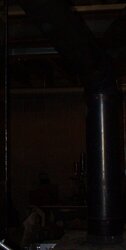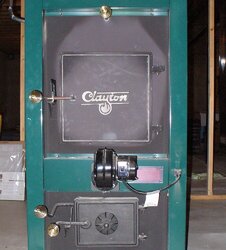I have had a Clayton 1600g for 11 years. We live in Ohio, so although it's not as cold as Wisconsin, we still have cold winters.
If temperatures are somewhat "normal" (highs in the 20s-30s, lows in the teens), I always get 8 hours out of a load. If it is cold, like highs in the teens and lows around zero, I still get 6 hours. I burn all seasoned hardwood. Some have said on this thread they think the forced air draft blower was a bad thing - for me it has been the exact opposite. Here's why....
Like you, I used to load the furnace, then turn the thermostat way down. I thought this would keep the furnace from burning so much wood. But when it was cold, the furnace would not keep the house warm enough - the temperature would drop down in the 60s in the house. I fought this for several years, then I pulled out my manual. It said to set the thermostat 4 degrees higher than your normal thermostat (4 degrees warmer than your backup gas/electric furnace). So I tried it....and it worked! And I actually have longer burn times. Why? The FAD helps your furnace maintain a hot, even burn. And, maybe most importantly, it is easier for the furnace to keep the house at 72-74 degrees than let it cool down, then try to warm it back up. My FAD does not run all the time... It just cycles off and on as told by the thermostat. And like I said - I always get 8 hours or even more. This morning it was 12 derees here with snow on the ground, and I loaded the furnace at 11:30, and didn't load it again until 8:00 this morning. The house was 71 degrees when I got up, the thermostat had been set on 72, and there was a nice bed of coals left. I keep the flap on my FAD set to about a half an inch opening - I just tape it in place with masking tape.
Everything else I keep tight - the spin draft and the top damper.
Hope this helps - when I made this switch 3 years ago, it made me changed from being so frustrated I was ready to get rid of it, to the furnace doing a great job through our last 3 winters - 3 of the coldest, snowiest we've had in 20-30 years. (obviously not as cold this winter for everybody

) The Clayton did a great job throughout.
 Thanks for reading!
Thanks for reading! Thanks for reading!
Thanks for reading!



 I'll try some bigger loads and maybe not load it everytime I hear the blower turn off. I'll leave it cycle for a while between loads! Thanks again!
I'll try some bigger loads and maybe not load it everytime I hear the blower turn off. I'll leave it cycle for a while between loads! Thanks again!